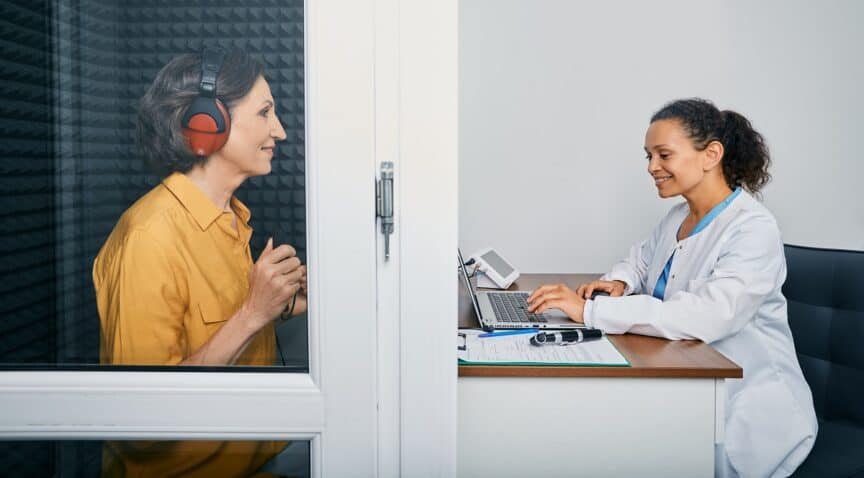When the time has come to get your hearing tested, you will be eager to find out the results. Whether you think you have hearing loss or are simply concerned about setting a solid baseline of your ability for future tests, you are wise to get an accurate measure of your hearing ability. Once you get your hearing checked, you will be prepared to seek the treatment you need, as well. Not only does treatment have benefits for your communication ability, but it also cascades into other areas of life, including physical, mental, and cognitive health. With these many benefits in store, you will no doubt be eager to start the process, and a hearing test is the first step. After you make an appointment for your hearing test, you don’t need to worry about the details to come. Our hearing health professionals are here to complete your diagnosis and to interpret your results. Although we are ready to recommend the right hearing aids for your needs, you still might be eager to understand some of the details of your condition. When we get the results of your hearing test, they take the form of an audiogram. This chart shows us how loud a sound needs to be in order for you to hear it. Several different bands of sound, organized by frequencies from low to high, are depicted on your audiogram. We use these results to connect you with hearing aids that are suited to your needs. We will also take the opportunity to consult with you about specific situations that make hearing difficult. Some people have trouble understanding voices in a crowd, while others know that the voices of children are particularly difficult to hear. We will use this information from your consultation in conjunction with your audiogram to arrive at a diagnosis and recommendation for treatment. The following are some of the hearing tests that can be used to arrive at a diagnosis.
Pure Tone Audiometry
This test is the most commonly used hearing exam, and it is effective for most kinds of hearing loss. The test begins with you putting on headphones or sitting in a sound-proof room. You will then be played simple sine-wave tones at different frequencies from low to high and volumes from loud to quiet. The tones are mixed to provide the best assessment of your hearing. When you hear a tone, you are simply asked to gesture by raising your hand or pressing a button. We will record your responses and use them to determine the threshold of volume at which you can begin to hear certain sounds. This measure is a great way to determine your ability to hear pure tones, and most people can benefit from this kind of test.
Speech Audiometry and Speech-in-Noise Testing
For those who have trouble hearing voices, additional testing may be necessary. Rather than using pure tones to test your hearing ability, speech audiometry is a way to test your ability to hear human voices. We will play words and phrases at different voices to determine if language is more difficult for you to hear. In addition, the speech-in-noise test is a way to establish your ability to understand voices in a crowd or when there is competing background noise. This test is particularly useful for those who have trouble discerning the voice of a single person from the group.
Tympanometry
A final type of test is used to diagnose physiological problems in the hearing process. This test uses bursts of air to see if there is an issue with the eardrum or other aspects of auditory reflexes. Only those with specific needs for diagnosis will be recommended for tympanometry. As you can see, there are many possibilities when it comes to hearing testing, and our hearing health professionals will be able to point you toward the right exam for your needs. Don’t hesitate to contact us to schedule your appointment. When we schedule your consultation we will decide what testing will give you a thorough picture of your hearing ability and potential need for hearing aids. Once we get the results, we will recommend treatment suited to you.


